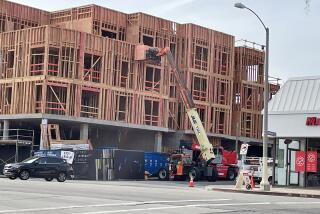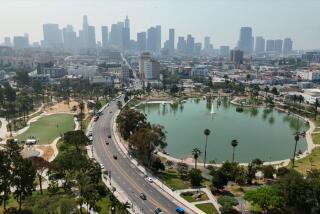Searching for Consistency in Oxnard’s Street Striping
- Share via
Dear Street Smart:
In mid-November of 1990, Oxnard’s F Street between 5th Street and Doris Avenue was resurfaced.
The yellow stripe down the middle of the street, which had existed prior to the resurfacing, was not replaced.
The Oxnard traffic department’s reply to my inquiry regarding this deletion was that the city no longer had funds to re-stripe streets.
About a month ago, Oxnard’s 2nd Street between C Street and Ventura Road was resurfaced.
Following completion of this work, the street was immediately re-striped, providing necessary guidance for safe traffic flow.
F Street between 5th and Doris carries as much traffic as 2nd Street, and is also burdened with a bus line.
The striping on 2nd Street demonstrates that the city does indeed have funds available to stripe its streets.
It is difficult to understand why the city will not provide drivers the safety and driving assurance of striping on F Street, while doing that very thing on 2nd Street.
How does Oxnard justify this?
John Goetz, Oxnard
Dear Reader:
The cost of re-striping is not the issue here, says Oxnard traffic engineer Joe Genovese.
Whenever an Oxnard street is resurfaced, the city’s traffic department evaluates the effectiveness of striping, crosswalks and pavement markings.
In the case of F Street, the city decided not to replace the center line because of the residential nature of the street, Genovese says.
“Marking a street with a center line gives a cue to the drivers that the street is for through traffic, and speed increases,” he says. “We want F Street to retain its residential character.”
By contrast, Oxnard’s General Plan designates 2nd Street as a local arterial street where the speed limit is higher, he says.
Although there are homes along parts of 2nd Street, they are either facing away from the street or are blocked by a wall.
Regarding the safety of F Street without a center stripe, Genovese looked at the accident history before and after the resurfacing and found no increase in accidents and no head-on collisions.
*
Dear Street Smart:
I am concerned about the safety of the Piru Bridge on California 126.
The center of the bridge has some nasty dips in it and is very uneven.
When Caltrans widened the bridge from two to four lanes last year, they used the original bridge in the center and built around it.
At first the road was smooth. But recently dips have appeared, especially in the westbound lanes.
Is Caltrans aware of this?
Kevin Potter, Santa Paula
Dear Reader:
The bridge may not be smooth, but it is safe, says Caltrans traffic engineer Luu Nguyen.
When Caltrans decided to widen the 55-year-old bridge, they examined it carefully to make sure it was sound.
“It is an old bridge and somewhat uneven, but it is safe,” Nguyen says.
Tearing the whole thing down and replacing it would have been much more costly, Nguyen says.
“The design is not as efficient as it would have been for a new bridge,” he says. “But this way saved several million dollars and works fine.”
*
Dear Street Smart:
All last year, you kept telling us that a signal would be installed at the corner of Erbes Road and Avenida de los Arboles in Thousand Oaks.
The sign indicating the installation of the signal has been up for several months, but still no signal.
There is so much congestion at that intersection that cars are sometimes backed up to the Department of Motor Vehicles down the street.
When is this signal going to be installed? I hope it is before a major accident occurs.
Joyce Standley, Thousand Oaks
Dear Reader:
Fear not. A light will soon shine at the corner of Erbes and Avenida de los Arboles, says Jeff Knowles, assistant traffic engineer for Thousand Oaks.
Unbeknown to most, traffic signals in Thousand Oaks are like snowflakes--no two are exactly alike.
Each intersection has its own character, determined by the flow and speed of traffic, the width of the roadway and myriad other factors, Knowles says.
All of these things must be taken into account when designing a signal.
The signal design is then submitted to a signal-making company in the Midwest, which takes about 2 1/2 months to produce and ship the perfect traffic light.
“Every light in Thousand Oaks is custom built, and that takes time,” Knowles says.
The signal at Erbes and Avenida de los Arboles should be installed by the end of March.
More to Read
Sign up for Essential California
The most important California stories and recommendations in your inbox every morning.
You may occasionally receive promotional content from the Los Angeles Times.










